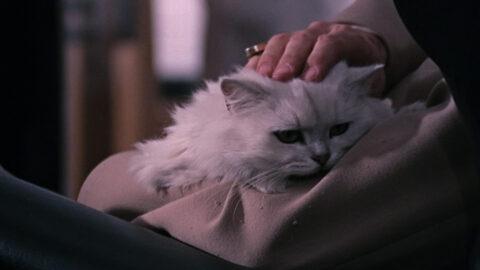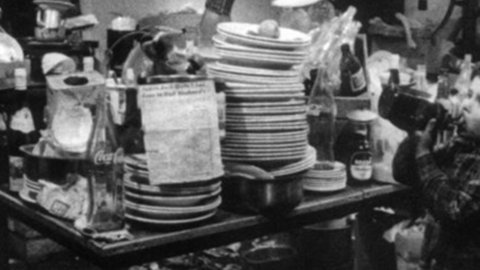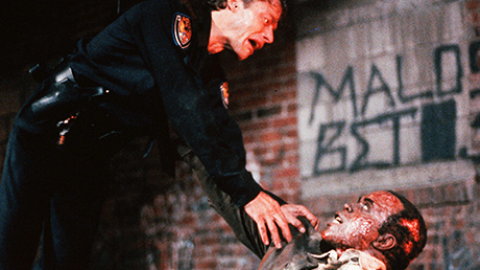Cinema ’67 Revisited: King of Hearts
In my 2008 book Pictures at a Revolution, I approached the dramatic changes in movie culture in the 1960s through the development, production, and reception of each of the five nominees for 1967’s Best Picture Academy Award: Bonnie and Clyde, The Graduate, In the Heat of the Night, Guess Who’s Coming to Dinner, and Doctor Dolittle. In this biweekly column, I’m revisiting 1967 from a different angle. As the masterpieces, pathbreakers, and oddities of that landmark year reach their golden anniversaries, I’ll try to offer a sense of what it might have felt like to be an avid moviegoer 50 years ago, discovering these films as they opened.
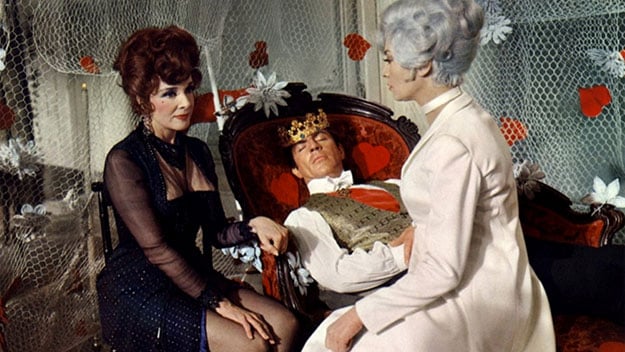
What, so far, is the defining movie of the Trump era? Is it Get Out, which takes on contemporary America with a mixture of disbelieving laughter and outright horror? Is it Wonder Woman, which gives us a savior in the person of a tough, powerful female lead? Is it La La Land, which just wants to get away from it all? And more to the point, is the label “defining movie of the Trump era” actually a death sentence that will only make a movie look more quaint and dated when future generations excavate it?
These questions occurred to me as I blew the dust off my DVD of Philippe de Broca’s King of Hearts and tried to view it simultaneously from 1967 and 2017. Looking back after half a century, how easy it is to imagine that King of Hearts must have been the ideal movie for its moment. Its plot seems tailored to the collective disillusionment of an era: toward the end of World War I, a Scottish soldier named Plumpick, played by Alan Bates, enters a small French village that has been rigged by the German Army to explode. The enemy is now in retreat; the townspeople have fled; he’s the guileless loser who drew the short straw, and for company, he has just a handful of escapees from the town’s madhouse—the only people left behind, presumably consigned by the bourgeoisie to history’s dustbin.
What could have been more apt for 1967 than a surreal meditation on the absurdity of war, especially one that propounded the then fashionable notion that madness—preferably of the picturesque/benign/fabulistic/court-jester variety—was the only sane response to the insanity of the world? (Richard Lester would dip into the same well toward the end of the year with How I Won the War.) As J. Hoberman put it when he revisited the film in 2003, “King of Hearts managed to conflate a topical anti-militarism with the sentimental glorification of mental illness already percolating through mid-’60s popular culture in the novel One Flew Over the Cuckoo’s Nest, movies like Morgan! and A Fine Madness, and even the Broadway musical Man of La Mancha.” Perfect timing for the Summer of Love, especially if you add in another factor, a hankering for “innocence”—the asylum escapees are presented as childlike and unspoiled by reality—that, in the mid-1960s, was beginning to manifest itself among young cinephiles in a renewed taste for silent comedy and the Marx Brothers. Much of the mirth in King of Hearts is in virtual pantomime, and Georges Delerue’s score winks at a much earlier era. Never mind that Hoberman deplored the “specious whimsy” of the overall result; in 1967, specious whimsy was huge!
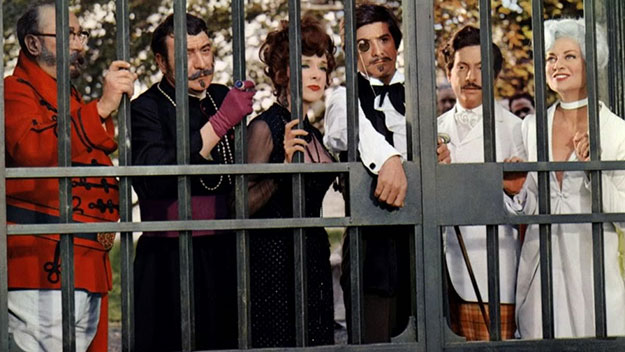
Except when it wasn’t. Although King of Hearts would eventually achieve a remarkable run as a cult film, that status was slow to come. When it was initially released, de Broca was 32 years old and had worked in film since his teens, including as assistant director on François Truffaut’s The 400 Blows; he arrived at King of Hearts’ United States release with a satchelful of grudges. In France, the picture had been dismissed so brutally that he had stopped working for almost a year. “The critics who admire Bresson and Godard don’t often like me,” he grumbled. “I’ve never been a favorite with Cahiers du cinéma.”
The film’s American reception was kinder, but only slightly. In fact, when King of Hearts opened at the Festival Theater on West 57th Street, it was roundly rejected by many critics (although it did receive a warm review from The New York Times’s Vincent Canby). Time’s critic remarked that “nothing about this comedy wears well,” and Wilfrid Sheed yawned, “The message is the old one about the lunatics being saner than the people who run the world . . . Anyhow, grant him his premise and Philippe de Broca still hasn’t thought of anything interesting to do.” Nor did the movie have much traction with audiences. It did some business in New York and then it receded from screens and memory, its life-as-an-absurdist-carnival aura little noticed or remembered.
It was not until a few years later—a few more years into Vietnam and LSD and a growing sense of horror and futility about war and violence—that King of Hearts found its improbable second life as a movie whose time had come. In the early 1970s, the film started getting one-day, and then one-week, bookings in college towns and cities. Revival houses were then growing in popularity, and the phenomenon of the midnight movie was just starting to take hold. A canny distributor paired de Broca’s film with a pair of underground cartoons, “Thank You Mask Man” (based on a Lenny Bruce routine about the Lone Ranger and Tonto) and “Bambi Meets Godzilla” (running time: 90 seconds; it goes about how you’d expect it to). Released under the umbrella “The King of Hearts And His Loyal Subjects,” the package started to take off—as a date movie, as a stoner movie, and as a counterculture phenomenon designed to appeal to the same moviegoers who couldn’t get enough of Robert Downey’s Putney Swope. This time, it didn’t recede; such was the demand that United Artists found itself having to strike new prints. King of Hearts ended up playing open-ended runs in many cities, most famously at the Central Square Theater in Cambridge, Massachusetts, where it ran for five full years.
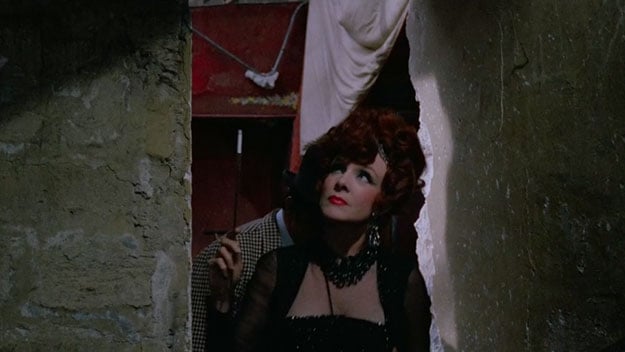
Today, there is no question that King of Hearts is a you-had-to-be-there experience, whether “there” was the ’60s or the ’70s. Its combination of smugness and sentimentality has aged poorly, and its take on mental illness as a delightful gift to a universe in need of fractured viewpoints is cringe-inducing. As a movie, it’s the equivalent of the despairing tweet/meme “lol nothing matters,” but longer and more Gallic. On the other hand, every generation deserves its own “lol nothing matters” movies, and it’s worth revisiting King of Hearts if only to contemplate how well or poorly its 2017 equivalents, whatever they might be, will stand the test of time.
How to see it: Look for copies of the out-of-print MGM/UA DVD, which sometimes turn up via third-party sellers on Amazon. The film will get a theatrical run at the Quad Cinema in August.
Mark Harris is the author of Pictures at a Revolution: Five Movies and the Birth of the New Hollywood (2008) and Five Came Back (2014).




